Our Waitpinga correspondent, Elizabeth Steele-Collins recently reported the sighting of three sunfish (Mola) in the “Encounter Bay/Waitpinga Cliffs area” in one week. We heard that the three sightings involved “at least two different individuals (owing to size differences)”.
Elizabeth has now clarified the matter as follows: –
“I personally only sighted the 1 Sunfish from Waitpinga Cliffs (6th June 2018) but there have been 3 separate sightings in the Encounter Bay area recently.
“First sighting was on 27th May by the Big Duck Boat Tours. The Sunfish I photographed in the afternoon yesterday 6th June may have been the same one as both were large size. A smaller Sunfish was also sighted off Wright Island yesterday afternoon (also by Big Duck Boat Tours).
“I thought you’d be interested to know that I’ve now heard back from Ralph Foster (SA Museum Collection Manager, Ichthyology)… and he says the Sunfish sighted yesterday at the cliffs is possibly a new species only very recently described, known as the ‘Hoodwinker Sunfish’, Mola tecta. It may also be Bump-head Sunfish, Mola alexandrini (syn ramsayi) but he says the one it definitely is not is Mola mola.
(Ralph Foster has since stated, “Hi Steve, I’m quoted in your article stating that this recently sighted sunfish definitely was NOT Mola mola. Well I’m just going to have to eat my words because Elizabeth Steel-Collins’ excellent followup images have shown that that is exactly what it is…
You can follow the evidence trail in these three iNaturalist observations that I posted on behalf of Elizabeth
https://www.inaturalist.org/observations/13199596
https://www.inaturalist.org/observations/13414075
https://www.inaturalist.org/observations/13538676
You’ll notice that sunfish expert Marianne Nyegaard, who recently described the Hoodwinker Sunfish, Mola tecta, agrees that this one is a ‘Pacific’ Mola mola (genetic analysis has shown that Mola mola as currently understood is actually 2 entities, so expect another new species to be formally named sometime…).
Ralph Foster, South Australian Museum”)
“It certainly is all very interesting… I’ll keep you updated when I hear more. There was no sign of the Sunfish out there today… but I did photograph a Southern Right Whale as it passed by the cliffs heading West. 🙂
This is one of the photos of the Sunfish at the cliffs yesterday.”: –
Elizabeth Steele-Collins’ photo of a sunfish
(Taken from Waitpinga Cliffs 6th June 2018)
(Ralph Foster posted Elizabeth’s sunfish photo to iNaturalist at https://www.inaturalist.org/observations/13199596 )
Elizabeth later sent us a collection of her sunfish photos (all shown below), adding, “This was the Sunfish out from the base of the cliffs… it was probably about 200 metres from where I was on the clifftop.”
“This last one shows you the location at Waitpinga Cliffs. On Wednesday 6th June the Sunfish was just out from the base of the cliffs and after the first sighing it was still swimming there 3 hours later. It was great to be able to look down and watch its fascinating behaviour. I think the sea conditions were good as it was pretty calm… otherwise I might not have seen it.”
“If it turns out that this one is a Hoodwinker Sunfish… here’s a cool diagram showing size comparison”: –
Many of the above details, including photos, were posted on our Facebook page.
PT Hirschfield of Pink Tank Scuba (Victoria, Australia) provided us with this photo of a sunfish taken while diving in tropical waters at Nusa Lembongan, Indonesia: –
A sunfish (Mola) at Nusa Lembongan
(apparently being cleaned by bannerfish (Heniochus))
(Image supplied PT Hirschfield / Pink Tank Scuba)
More of PT Hirschfield’s sunfish photos can be seen featured in my article titled More Tropical Fish Cleaners. All of these photos were at taken at Nusa Lembongan and showing a sunfish apparently being cleaned by bannerfish (Heniochus).
For further details regarding sunfish sightings in South Australia, read Dan Monceaux’s article titled Sunfish sightings in South Australia.
Below are some of the comments attached to Dan’s article: –
“According to http://www.sdfsa.net/newsletters/2011/2011-05-News-Sheet.pdf a “large sunfish was found in the Port River on 9th July 1903. Almost 108 years later, another sunfish (1.2m) was found in the Port River on 13th April (2011)”.”
“Visit http://www.redmap.org.au/news/2014/08/02/are-mysterious-sunfish-strandings-becoming-more-frequent/ for further reading on sunfish.”
“Redmap member Richard Curtis found an Ocean sunfish washed up on a Hobart beach in December 2014. Ocean sunfish are the world’s heaviest bony fish; weighing in at about one tonne for adults. It is found in tropical and temperate waters but is a rare visitor to the Derwent River in Hobart. See http://www.redmap.org.au/region/tas/sightings/1574/ .”
Dan’s article features a YouTube video shot by Aaron Morgan of an ocean sunfish in shallow water close to Port Augusta.
Mick Sedlmayer says, “I remember seeing one in the Outer Harbour (Harbor) channel in the late 80s. I couldn’t give you a date… Or even an exact year, c1987, It was adjacent to the control tower, swimming upstream.”
Many thanks go to Elizabeth Steele-Collins for reporting her sunfish sightings and also for her photographs and diagram. My thanks also go to PT Hirschfield of Pink Tank Scuba for provided us with her sunfish photo and Mick Sedlmayer for his additional comments.

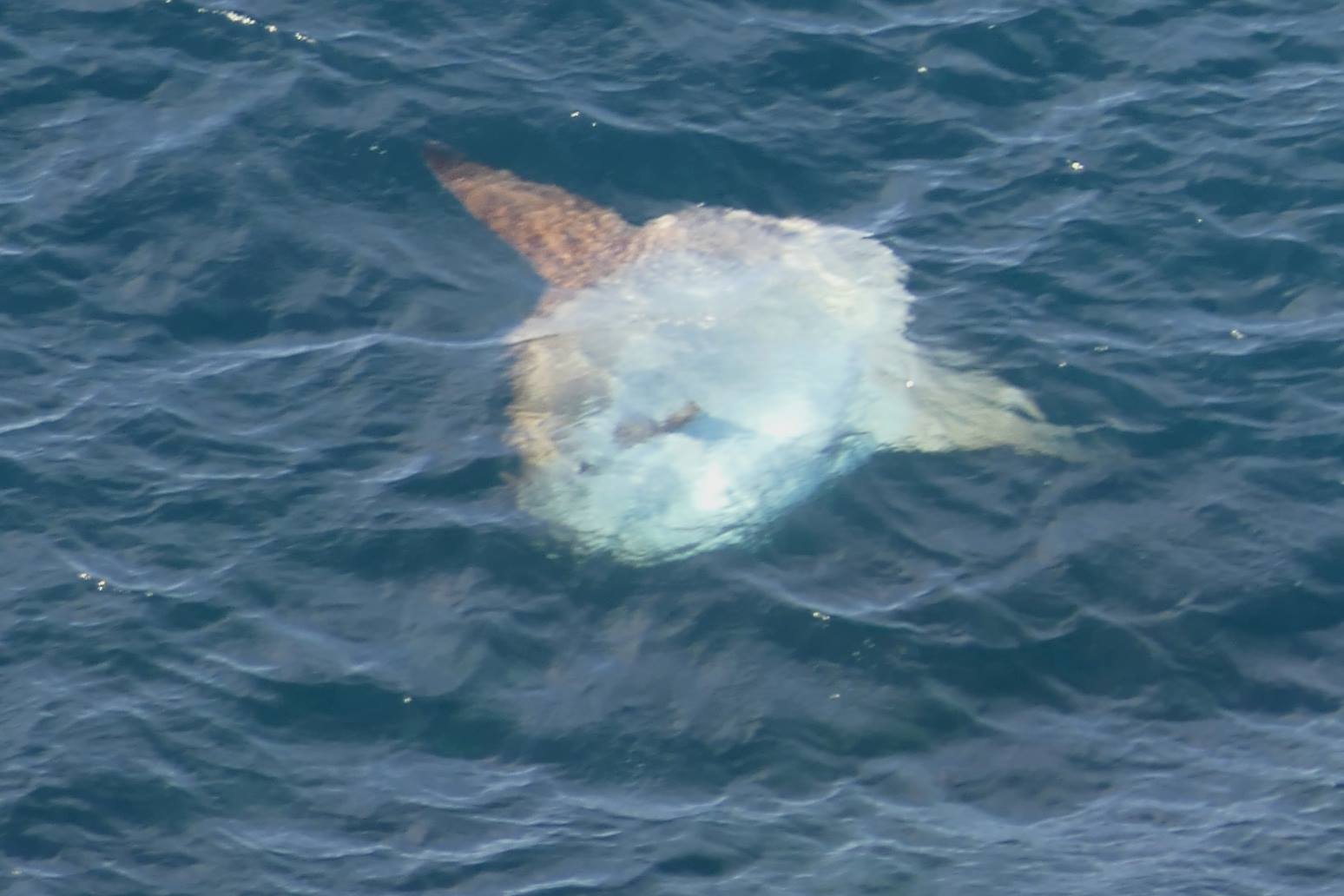
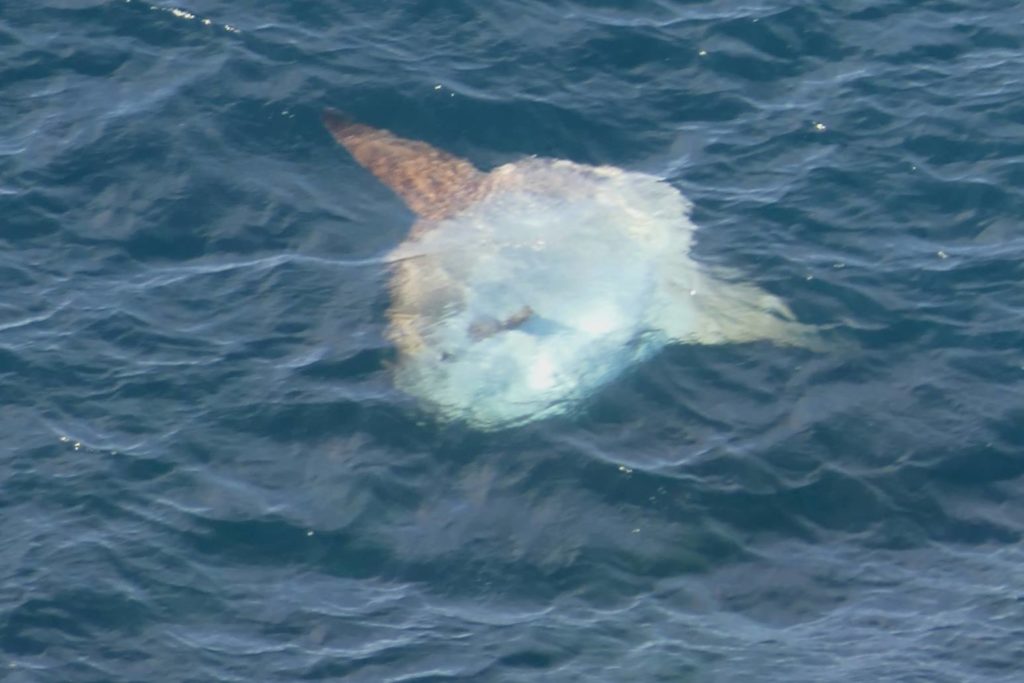
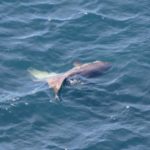
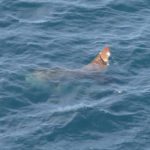
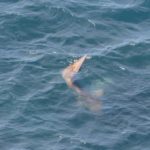
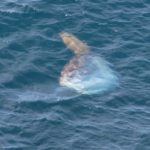
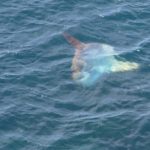
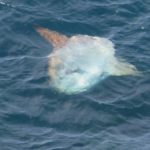
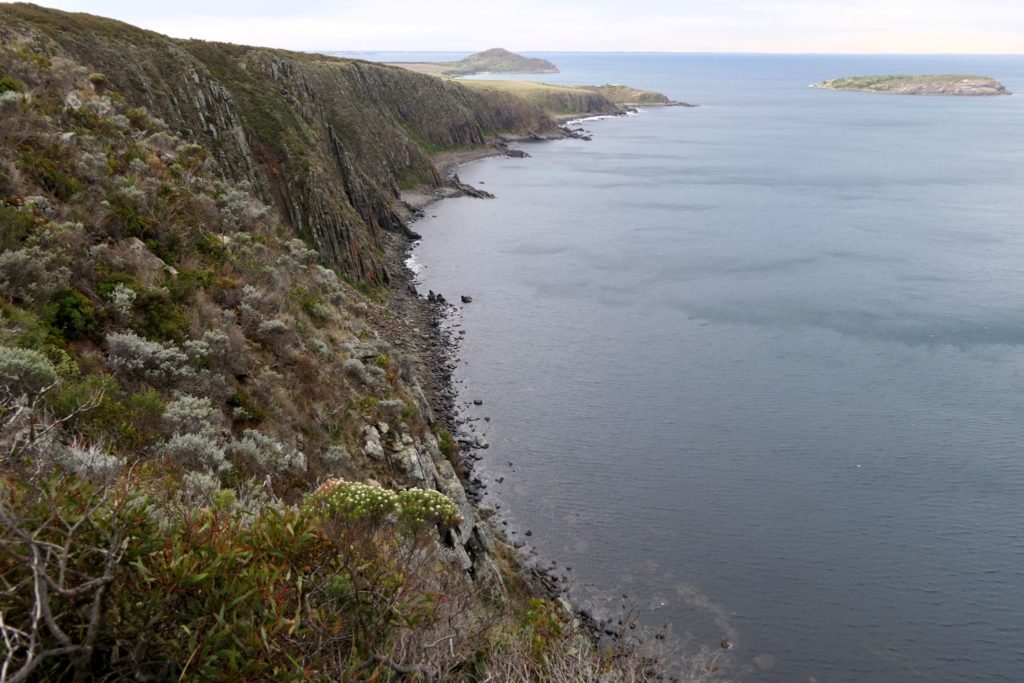

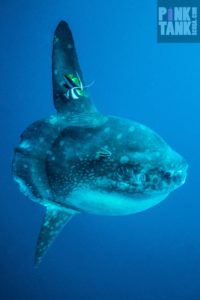
Good job with this, Steve. Sorry I wasn’t able to help pull this article together myself.
Thanks Dan, no worries. I wrote a brief report first then added to it, then had trouble doing major changes, so I had to start from scratch again. Info is still coming through as we speak.
Elizabeth had a second sighting of the sunfish on 9th June, 3 days after the first sighting. She posted new photos to our Facebook Members page at https://www.facebook.com/photo.php?fbid=1966320706712272&set=pcb.1966327950044881&type=3&theater&ifg=1
ripper article
Thanks mate!
Hi Steve,
I’m quoted in your article stating that this recently sighted sunfish definitely was NOT Mola mola. Well I’m just going to have to eat my words because Elizabeth Steel-Collins’ excellent followup images have shown that that is exactly what it is…
You can follow the evidence trail in these three iNaturalist observations that I posted on behalf of Elizabeth
https://www.inaturalist.org/observations/13199596
https://www.inaturalist.org/observations/13414075
https://www.inaturalist.org/observations/13538676
You’ll notice that sunfish expert Marianne Nyegaard, who recently described the Hoodwinker Sunfish, Mola tecta, agrees that this one is a ‘Pacific’ Mola mola (genetic analysis has shown that Mola mola as currently understood is actuallly 2 entities, so expect another new species to be formally named sometime…).
Ralph Foster
South Australian Museum
Thanks Ralph, we are still working on a follow-up article where the draft currently states, “By 20th June, we had discovered that it was now being suggested on iNaturalist that the sunfish being sighted by Elizabeth is actually an Ocean Sunfish Mola mola.” We cautiously left your name out of it, but you may wish to have your name cleared within the new article now. Otherwise, your comments have now been added to our first article, thus explaining everything.
Hi Steve,
Feel free to write whatever you want to in the article – I’m always ready to admit to when I’ve made a mistake. In this case I definitely jumped the gun. I think this was a nice example of the evidence gradually accumulating to produce a good ID and it’s a credit to Elizabeth who persisted in order to get good images of the important taxonomic features. In many respects the ID as Mola mola is more interesting than if it had been the newly described Hoodwinker Sunfish, Mola tecta. From what little we know, it seems that Mola mola is the least common of three species of Mola that occur in our waters.
[…] sightings continued in the Waitpinga Cliffs area after the posting of my article Sunfish Sightings in the Encounter Bay/Waitpinga Cliffs Area. I thought it would be worthwhile summarising those sightings, like Dan Monceaux started doing in […]
[…] A Summary of Recent Sunfish Sightings in the Encounter Bay/Waitpinga Cliffs Area and Sunfish sightings in the Encounter Bay/Waitpinga Cliffs area (Updated). […]